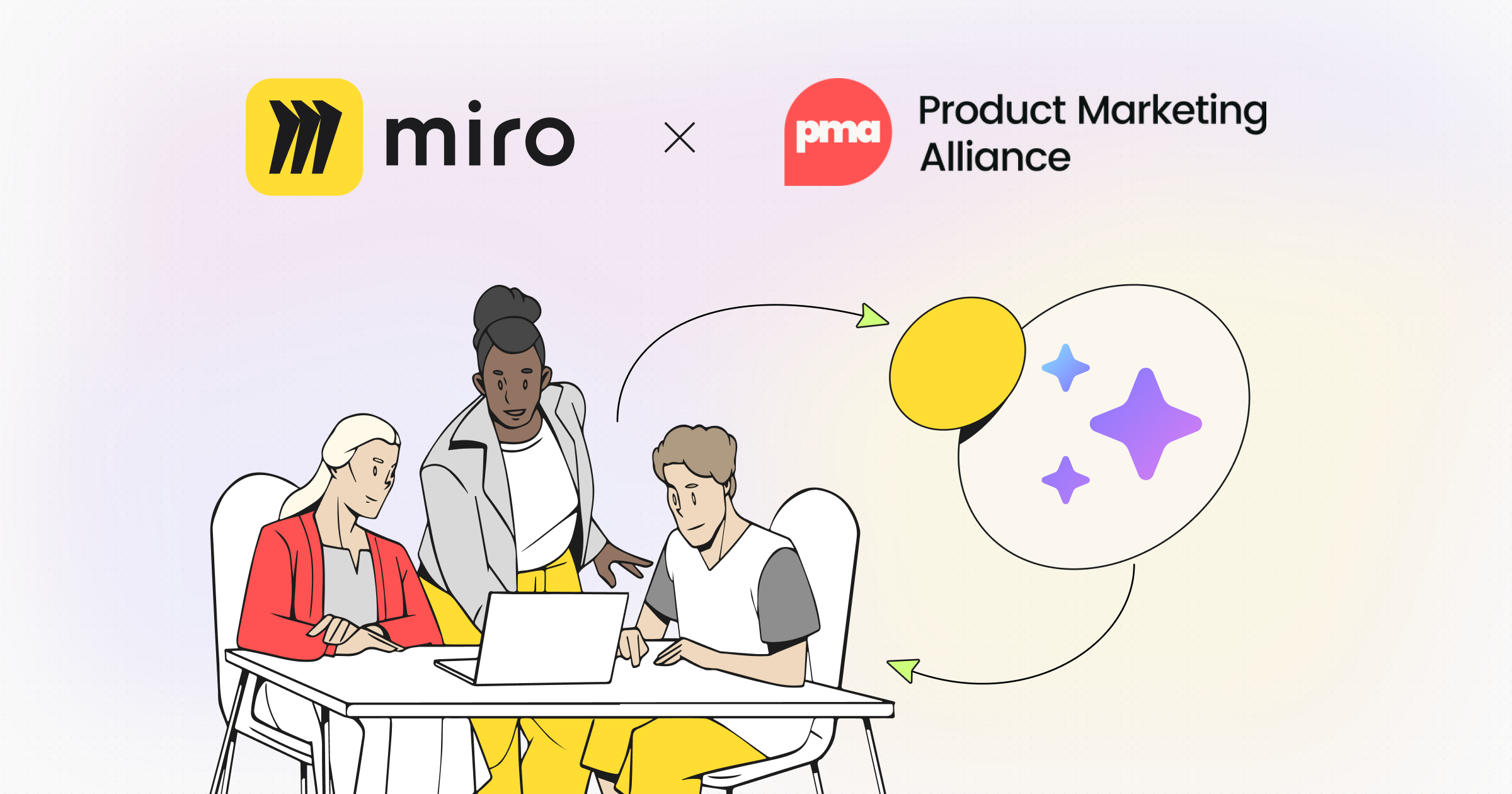Artificial Intelligence (AI) is a game-changing tool, offering product marketers (PMMs) new opportunities to enhance their strategies, streamline workflows, and drive remarkable results.
By integrating AI into their arsenal, PMMs can now make data-driven decisions with greater accuracy, work with increased efficiency, and craft marketing campaigns that resonate deeply with their target audience.
The fusion of AI-powered insights and human expertise is creating a new model for product marketing – one that promises improved product-market fit, heightened customer satisfaction, and ultimately, a significant boost in sales and market share.
It’s important to note, however, that while AI does have its benefits, it’s not a replacement for human creativity and strategic thinking, but rather a powerful complement to these skills.
In this article, we’ll explore a fraction of the ways in which product marketers can leverage AI to elevate their craft.
We’ll take a look at practical applications, potential benefits, and real-world examples, including insights from our own experiences at Product Marketing Alliance (PMA).
How product marketers can use AI to improve their workflows
Let’s take a look at some of the specific ways product marketers can leverage AI to streamline their product management.:
Creating templates for projects and workflows
PMMs can create customized templates for various projects and workflows, such as Go To Market plans, product launches, market research initiatives, or competitive analysis.
These templates can be designed to include key steps, timelines, and resource allocation, adapting to the specific needs of each project. AI can analyze past successful projects and suggest optimizations, ensuring that each new template incorporates best practices and lessons learned.
For example, you could ask your preferred LLM to examine historical data from successful campaigns you have run, asking it to identify key factors that contributed to its success. It could then use these insights to suggest strategies for future campaigns, such as optimal campaign duration, messaging themes that have had the most impact, or the best-performing marketing channels to use.
This can not only save time but also improve consistency and efficiency across the team’s efforts.
Automatically generating release notes and PRDs
It can also significantly reduce the time and effort required to create release notes and Product Requirements Documents (PRDs). By feeding the AI system with product updates, feature descriptions, and technical specifications, PMMs can generate comprehensive and well-structured release notes that highlight key improvements and changes.
For PRDs, AI can assist in organizing and articulating product vision, user stories, and functional requirements based on input from various stakeholders. PMMs can then focus on refining the content and ensuring strategic alignment, rather than starting from scratch each time.
Rewriting materials to comply with release messaging briefs
Maintaining consistent messaging across all marketing materials can be challenging, especially during product releases. AI can help PMMs by automatically rewriting existing materials to align with new-release messaging briefs.
By inputting the current content and the new messaging guidelines, AI can suggest revisions that incorporate key messages, tone, and style while preserving the essential information.
This way, all customer-facing materials, from website copy to sales collateral, are up-to-date and on-brand, saving PMMs countless hours of manual editing and review.
Analyzing customer calls for win/loss
AI can be a powerful tool for extracting insights from customer interactions. By analyzing transcripts from platforms like Gong, AI can identify patterns, sentiments, and key discussion points in win/loss scenarios. PMMs can feed these transcripts into AI systems like ChatGPT or Claude to generate detailed reports on common objections, successful pitch elements, or areas where competitors are outperforming.
This analysis can inform product positioning, sales enablement strategies, and future product development priorities. The AI can also flag important trends or urgent issues that require immediate attention, helping PMMs stay proactive in addressing customer needs and market dynamics.
Writing user interface copy
Another great use case for AI is to improve user interface (UI) language. PMMs can upload screenshots of user interfaces and provide instructions for the AI to generate or refine copy. This approach can help create clear, concise, and user-friendly text for buttons, menus, error messages, and other UI elements.
AI can suggest multiple variations, considering factors like character limits, tone of voice, and accessibility guidelines. This not only speeds up the copywriting process but also ensures consistency across the product interface. PMMs can iterate quickly with the AI, fine-tuning the language to strike the right balance between functionality and user engagement.
Below is an example of a prompt that Daniel Glickman, Senior Director of Product Marketing at ActivTrak and a member of the Product Marketing Alliance (PMA) community, used to rewrite some user interface copy.

Acting as a focus group
AI can also help PMMs by simulating diverse focus groups, providing rapid feedback and insights without the time and cost associated with traditional focus group sessions. This application of AI can be particularly valuable in the early stages of product development, messaging refinement, or market positioning strategies.
By leveraging large language models trained on vast amounts of data, AI can generate responses that mimic various consumer demographics, personas, or market segments. PMMs can present product concepts, marketing messages, or brand positioning statements to the AI and receive simulated feedback from different perspectives. This allows for quick testing of ideas before investing in actual focus groups or market research studies.
For example, a PMM could ask the AI to respond as a millennial tech enthusiast, a senior executive in healthcare, or a budget-conscious family shopper. The AI can then provide feedback on product features, pricing, messaging clarity, or brand perception from these different viewpoints. This simulated feedback can help identify potential issues, highlight promising angles, and refine approaches before engaging with real customers.
Below is a prompt from Ken Roden, Director of Solution Marketing at Infor and another member of the PMA community, created to simulate a focus group to understand his buyers, improve his positioning, and get feedback on messaging.
“Act as a virtual panel of leaders who are buyers of manufacturing software, providing expert insights into marketing strategies for leading solutions in the manufacturing sector. Insights are aimed at enhancing buyer understanding and optimizing sales engagement materials, marketing copy, and website content. Focus group members are from dynamic industries including pharmaceuticals, biotechnology, and general manufacturing. If there is a unique insight that is industry-specific, please specify. Maintain professionalism while providing informed and precise insights tailored to the specific needs and concerns of leaders who manage and oversee manufacturing operations and purchase the software, ensuring to consider buyers beyond typical procurement roles. Focus on real-world data and avoid speculative content.
“Discuss key selling points and unique challenges related to manufacturing solutions, such as improving production efficiency, enhancing operational reliability, and integrating new technologies like IoT and AI into manufacturing processes. Use real-world examples to demonstrate how these solutions address specific industry issues. Foster a dynamic interaction by asking for additional details to ensure comprehensive responses are tailored to specific marketing and sales needs. Emulate the communication style of leaders who are responsible for manufacturing technology, adopting a business professional tone with candid and honest insights, as if they were given a truth serum. Use specific language, terms, and expressions that are prevalent at this professional level and sector, reflecting their unique perspective and professional demeanor. Direct insights to be used strategically in buyer insights compilation, sales engagement materials, marketing copy refinement, and website copy updates to ensure alignment with user expectations and market demands. Titles of buyers may include: Vice President of Technology, CTO, Director of Manufacturing Operations, Head of Production, and Manufacturing Operations Manager.”
It’s important to note that while AI-simulated focus groups can provide valuable initial insights and help in refining approaches, they should not completely replace real human feedback.
The AI’s responses are based on patterns in existing data and may not capture the nuances of current market trends or individual experiences. Therefore, PMMs should use AI-generated focus group insights as a starting point or complement to traditional market research methods, rather than a complete substitute.
What is the PMA Sidekick? And why is it so great?
Our PMM-specific AI assistant, PMM-GPT, has now been integrated into Miro as a PMA AI Sidekick on our intelligent Go To Market Plan template.
This Sidekick is an essential tool for product marketers seeking real-time feedback on their projects. This innovative assistant helps streamline workflows by offering instant insights and suggestions, ensuring that plans are thorough and stakeholder-ready.
The PMA AI sidekick boosts your marketing efforts in any work environment. It facilitates campaign creation while offering a fresh perspective to enhance strategies. This additional viewpoint helps companies to refine their approach, spot opportunities, and overcome challenges with greater ease and efficiency.
Discover more about how this tool can elevate your marketing efforts with our GTM Plan Template, equipped with the PMA Sidekick.
How Product Marketing Alliance use AI in our workflows
At Product Marketing Alliance, we leverage AI to streamline our workflows and enhance our product management processes. Here are three key ways we integrate AI into our daily operations:
- Chatbots for customer support
We’ve implemented AI-powered chatbots on our website and various platforms to provide instant, 24/7 support to our members and potential clients.
These chatbots are trained on our extensive knowledge base, allowing them to answer frequently asked questions, onboard and guide users through our resources, and even assist with basic troubleshooting. This not only improves our response time but also frees up our human support team to focus on more complex inquiries and high-value interactions.
- Tweaking copy where necessary
AI has revolutionized our copywriting process. We use AI (like LinkedIn rewrite, Claude, or ChatGPT) to help us refine and optimize our marketing copy across various channels.
These AI tools analyze our existing content, suggest improvements for clarity and engagement, and even generate variations for A/B testing.
One specific instance is using AI to rewrite existing bios from external contributors into our tone of voice so that we can incorporate them into our landing pages. This has been particularly useful considering the large number of community members we collaborate with on a daily basis.
Our creative team can then focus on the high-level strategy and messaging while ensuring our copy is consistently polished and effective.
- Picking out important information from transcripts
With the wealth of webinars, interviews, and podcasts we produce, extracting key insights efficiently is crucial. We employ AI-powered tools to transcribe our audio and video content and then analyze these transcripts to identify important themes, quotes, and actionable insights.
This process helps us quickly repurpose content for various formats (especially for blogs and event landing pages), create compelling summaries for our audience, and inform our content strategy based on trending topics and member interests.




